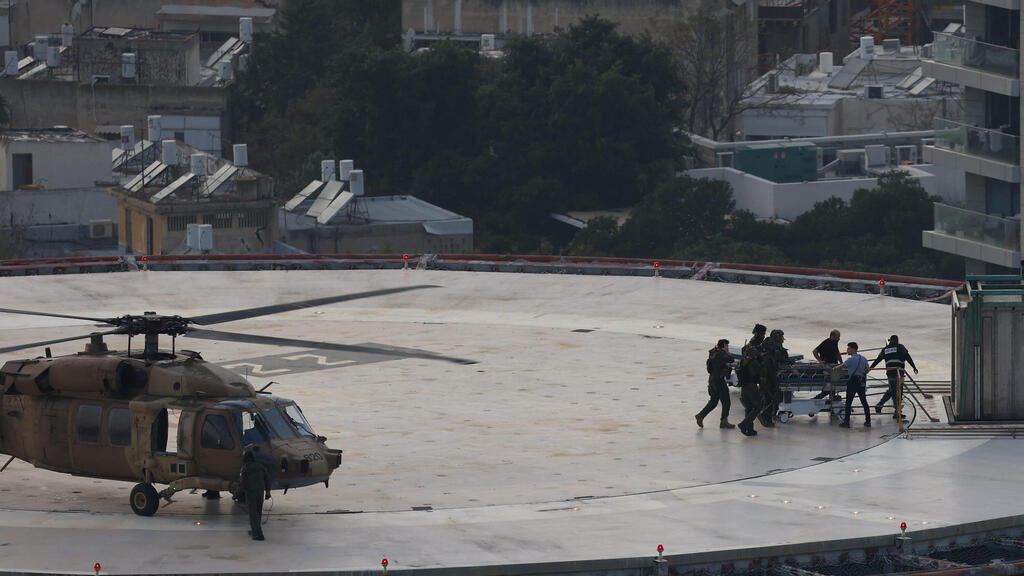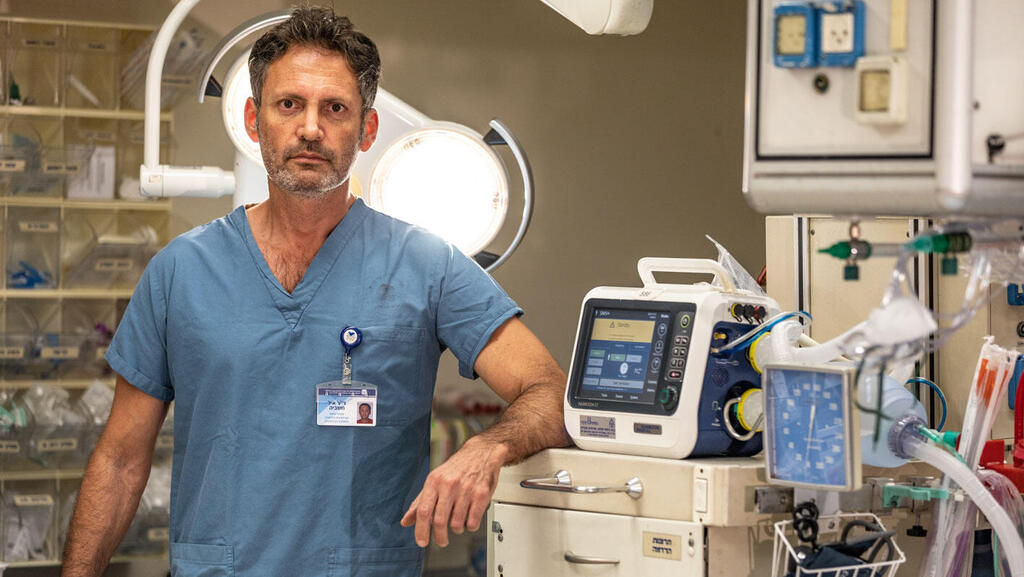Getting your Trinity Audio player ready...
Blast injuries present a complex medical challenge, requiring advanced preparation and a rapid, professional response. However, until the outbreak of the war in Gaza, clinical data accumulated on such injuries hadn’t been formalized into research or a structured medical protocol.
The Tel Aviv Sourasky Medical Center lifted the glove with a study led by the hospital’s Emergency Medicine Academy. Recently published in the INJURY journal, the study summarized the experience of primary care in the trauma room for blast injury victims during the first four months of the war.
The study proposes an initial diagnostic and treatment protocol based on the doctors' experience during the months of combat, which allows for optimal care that, in many cases, can save lives. The medical team hopes this protocol could serve as a treatment model in terror incidents and wars around the world, especially for this specific type of injury which has become more common in war and terror attacks in recent years.
The study concluded that blast injuries are associated with particularly high rates of morbidity and mortality. For this reason, a deeper understanding of these injuries is critical for providing accurate, rapid and effective treatment. Blast injuries occur not only on the battlefield but also on the civilian front, affecting residents including children. Therefore, readiness to treat such injuries is crucial.
"We've seen many blast injuries since the war began," said Dr. Neta Cohen, director of the hospital’s Emergency Medicine Academy and one of the study’s authors. "Blast injuries aren’t new; we've seen them in previous terror attacks and wars, but not on this scale, so there isn't enough information about them. We found these injuries are unique and complex — hence, we decided to describe and study them to figure out the best ways to treat them.
"The importance of this study, from our perspective, is to prepare for future scenarios, including continued blast injuries in all settings, both military and civilian. Missile and rocket injuries are the ones we fear most, from north to south. As a hospital that treats many civilians, the study's conclusions will help us prepare for additional extreme scenarios."
 Dr. Neta CohenPhoto: Jenny Yerushalmi, Tel Aviv Sourasky Medical Center
Dr. Neta CohenPhoto: Jenny Yerushalmi, Tel Aviv Sourasky Medical CenterThe study examined 208 injured who arrived at Tel Aviv Medical Center starting from October 7. Out of all the casualties, 109 suffered blast injuries, with 88% being soldiers and 12% civilians. The findings indicated that approximately 44% of the injured experienced severe, multi-system trauma requiring acute, life-saving interventions from various medical teams upon their arrival in the trauma room.
"This is a very unique group. It's not only the first war of its kind in the state’s history but also one of the first in global military conflicts where the wounded are evacuated to hospitals directly from the battlefield. Within 15 minutes, they're on the helicopter, and within another 15 minutes, it lands here."
One of the study’s main achievements is the development of a 'treatment algorithm' designed to provide guidelines for initial care of blast injury patients in the trauma room. This algorithm is based on existing medical literature, combined with the clinical experience gained at the hospital during the war and aims to assist medical teams in managing complex cases of blast injuries, allowing for faster and more accurate initial treatment.
"From October 7 until now, we've received over 200 IDF Black Hawk helicopters at our landing pad, carrying over 250 soldiers directly from the battlefield," says Dr. Eyal Hashavia, head of the hospital’s trauma unit.
"This is a very unique group. It's not only the first war of its kind in the state’s history but also one of the first in global military conflicts where the wounded are evacuated to hospitals directly from the battlefield. Within 15 minutes, they're on the helicopter, and within another 15 minutes, it lands here."
According to him, this rapid evacuation allowed the medical team to properly assess how to provide the best care for the injured and develop a unique treatment protocol. "This is the golden hour in trauma care. The injury is very fresh, giving us ample opportunity to intervene and make a significant impact during that time. We've treated a variety of injuries — gunshot wounds, grenade blasts and mortar injuries.
"In the study, we focused on the main volume of injuries, specifically blast injuries, which we selected from among the 250 wounded soldiers. We examined how we managed these cases. It took us just two to three weeks to receive a steady flow of such injuries and to realize we needed to prepare a specialized team composed of experts in various fields who could handle the range of injuries resulting from blast impacts. This team includes a group of doctors ready and waiting for the soldiers in the trauma room, which was prepared in advance."
'This quick response is simply saving lives'
How does it work in practice?
"When we received an alert of incoming injured soldiers, I went up to the landing pad and came down with them. From there, we classified them according to the severity and complexity of their injuries,” Dr. Hashavia explained. “Usually, three wounded arrived on each helicopter —one very serious, one moderately serious, and one in moderate to minor condition.”
“We formed three teams, with the team receiving the most critical patient composed of senior doctors from various fields. This way, we knew how to handle, diagnose and offer solutions even at the triage stage. The management of trauma patients is a broad field. There are many types, depending on the mechanism of injury. We developed a special version tailored to blast injuries to meet these specific needs,” he said.
3 View gallery


Tel Aviv Sourasky Medical Center trauma room
(Photo: Lior Zur, Tel Aviv Sourasky Medical Center)
He added, "We realized that many of the blast injuries we received involved significant physical damage that could easily be overlooked. That's why we developed a diagnostic tool that allows us to quickly understand what we're dealing with and assemble the treatment team right at the patient's bedside from the moment they land. This quick response, combined with knowledge of how and what to treat first and to leave for later, are life-saving measures. Translating that into action is simply saving lives."
The new study provides important insights that can serve as a basis for effective treatment of casualties in any scenario. The conclusions stress the need for continued learning and understanding of these injuries to ensure that medical teams are prepared for any scenario.
"We were pleased to see that the method we developed has borne fruit and results in the published paper," Dr. Cohen added. "Ultimately, we found that the most effective tool is a clinical algorithm on a single sheet of paper that any trauma room can hang on the wall or integrate into the computer for use when needed — both to prepare the room for receiving patients and to guide treatment when casualties arrive.”
“While the written paper contains a lot of scientific background and analyses, the algorithm provides a much more practical tool which is exactly why it was developed,” he explained.
Dr. Cohen hopes the new findings will also help improve care in other hospitals across the country and even across the world. "Our goal is to be prepared for any future scenario, both militarily and civilian in nature. This is a global threat as well: terrorist attacks are increasing worldwide, not just in Israel. We hope our results will contribute to better identification and treatment of blast injuries in Israel and around the world."





